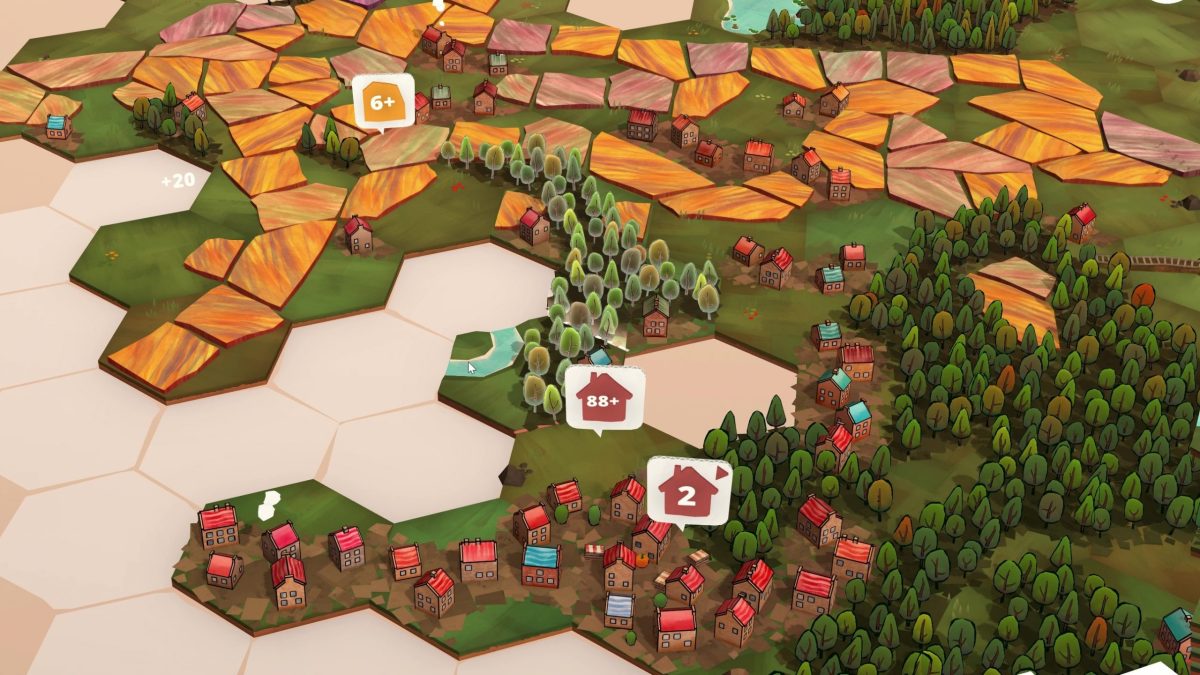Where is my mind?
Games are very goal-driven, which is an extremely obvious statement to make, but I do have a point. Throughout the history of video games, there have been attempts at concepts that don’t have a set goal. Sim City, for example, has no real ending. You can say that the goal is to build the biggest, most functional city possible, but how do you know when you reached that?
Dorfromantik has that same sort of mindset. Technically, there is a goal. You can argue that there’s an ending. You can even point out that there’s a competitive angle. All of that is missing the point. Dorfromantik is about putting that all aside and just letting your mind go, but as it turns out, letting my mind go isn’t that great of an idea.

Dorfromantik (PC)
Developer: Toukana Interactive
Publisher: Toukana Interactive
Released: April 28, 2022
MSRP: $13.99
It’s hard to peg Dorfromantik to a genre. You might say it’s a city-builder, or perhaps it’s more like a jigsaw puzzle. I’d say it’s Solitaire. You’re given a finite stack of hexagonal tiles and that’s it. The tiles have things like streams, train tracks, forests, houses, fields, and empty plains, but there’s no picture you’re trying to complete. You can only see three tiles ahead of you, so you just have to try your best to connect them in the most optimal way.
If you want to continue with your creation, you need more tiles. Certain tiles have objectives attached to them, such as being connected to a certain number of matching tiles. Other times, you have to connect them to a specified number of matching tiles, and you can’t go over. Whatever the objective is, completing them adds more tiles to your stack.
That’s all there really is to it. You just plop them down as you see fit. Maybe you want to build the biggest board possible. Perhaps you’d rather focus on creating one big megaforest. Chances are, there’s a reward for whatever you choose to do.
Dorfromantik is a calm, meditative game. It’s hard for me to envision the type of person who approaches it with the intention of climbing to the top of the leaderboard. However, if you really need a purpose for your tile-linking skills, there is a competitive side to it. There are high scores to be achieved and monthly challenges to win. Perhaps optimizing your strategy runs contrary to Dorfromantik’s central philosophy, but you do you.
New tiles are also unlocked by crossing certain milestones. Getting a certain score or linking enough of the same tiles might grant you something useful, like the indispensable water crossing for trains. In that sense, there is some progression to Dorfromantik, but it’s all linked to your ability to better your landscaping skills.
There is also a creative mode available that allows you to craft your own landscapes without worrying about the tiles in your stack. As it turns out, a solid framework of rules and guidelines is necessary to keep me engaged, but it’s there for anyone who just enjoys painting with hexagons.

But while I speak of the game’s meditative mindset, I have to circle back to the fact that it didn’t work favorably for me. I found that Dorfromantik allowed my mind to wander too easily, and while it would start by making up stories for the little private islands I’d create, eventually it would start digging up the darker parts of my psyche. Due to this, I actually found the game uncomfortable to play.
That’s a me problem. It’s obviously contrary to what Dorfromantik is attempting to achieve, but I feel like it’s necessary to bring it up to highlight the fact that this isn’t necessarily going to fit everybody’s needs for relaxation. For one thing, the fact that you need to let go of the idea that every tile is going to have a perfect fit on your board is going to aggravate certain people with OCD. For me, it merely gave my mind too long of a leash. Sometimes, I need games as a distraction, but as it turns out, the best way for them to calm my brain worms is to keep them occupied. With that in mind, Doom Eternal is a better meditation for me than Dorfromantik.

At the same time, I won’t argue that Dorfromantik seems to meet its vision and philosophy quite well. If there’s feedback I can actually give it, it’s that I’d love to see more variation in tiles. There are “biomes” that you can find by branching out far enough, but these merely change the colors of the trees, ground, and houses. I think it would be neat if enough village tiles would give way to more modern skyblockers. The contrast of forest and rural towns to highways and urban areas would feel satisfying to me.
I’m not certain if I’m personally going to return to Dorfromantik following this review, simply due to my mind’s response to its relaxing gameplay. On the other hand, I would at least recommend giving it a try. The price seems right for something that you may either embrace as a calming way to take a moment, or bounce off of because it’s just not for you. However, in terms of execution, I’d argue that Dorfromantik absolutely nails it.
[This review is based on a retail build of the game provided by the publisher.]






Published: Apr 28, 2022 04:00 am